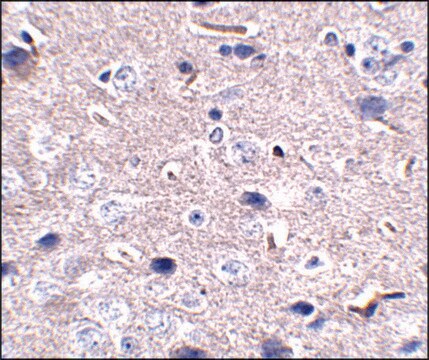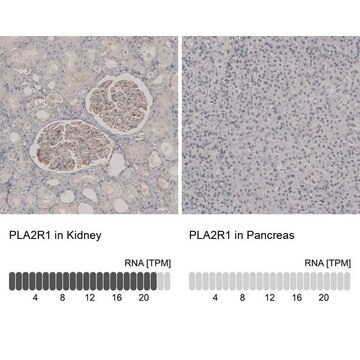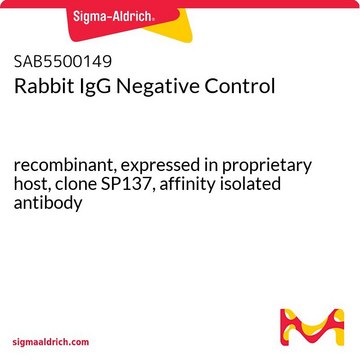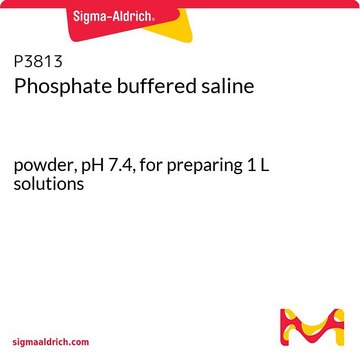MABF925
Anti-FcγRII (human) Antibody, clone AT10
clone AT10, from mouse
Synonym(s):
CD32CDw32, Fc-gamma RII-a, Fc-gamma RII-b, Fc-gamma RII-c, Fc-gamma-RIIa, Fc-gamma-RIIb, Fc-gamma-RIIc, FcRII-a, FcRII-b, FcRII-c, IgG Fc receptor II-a, IgG Fc receptor II-b, IgG Fc receptor II-c, Low affinity immunoglobulin gamma Fc region receptor II-a
About This Item
Recommended Products
biological source
mouse
Quality Level
antibody form
purified immunoglobulin
antibody product type
primary antibodies
clone
AT10, monoclonal
species reactivity
human
technique(s)
flow cytometry: suitable
isotype
IgG1κ
NCBI accession no.
shipped in
dry ice
target post-translational modification
unmodified
Gene Information
human ... FCGR2A(2212) , FCGR2B(2213)
General description
Specificity
Immunogen
Application
Flow Cytometry Analysis: A representative lot was conjugated with Phycoerythrin (PE) and immunostained the surface of human Burkitt′s lymphoma Ramos cells transfected with FcγRIIB, but not untransfected Ramos cells (Courtesy of Professor Martin J. Glennie, University of Southampton, UK).
Flow Cytometry Analysis: Clone AT10 hybridoma culture supernatant was employed to detect FcγRII-positive peripheral blood lymphocytes (PBLs) by flow cytometry (Greenman, J., et al. (1991). Mol. Immunol. 28(11):1243-1254).
Immunoprecipitation Analysis: A representative lot immunoprecipitated FcγRII from human K562 erythroleukemic cells (Greenman, J., et al. (1991). Mol. Immunol. 28(11):1243-1254).
Affinity Binding Assay: Affinity binding study using the Fab′ fragment of clone AT10 showed an equilibrium binding constant (Ka) of 5.3 x 10^8/M and a total of 1.5 x 10^5 binding sites per K562 cell (Greenman, J., et al. (1991). Mol. Immunol. 28(11):1243-1254).
Neutralization Analysis: The F(ab′)2 fragment of clone AT10 blocked FcγRII-dependent B-cell activation by a chimeric anti-CD40 mAb with human IgG1 Fc (ChiLob 7/4 h1) induced in the presence of FcγRII-overexpressing 293F as the crosslinking cells (White, A.L., et al. (2015). Cancer Cell 27(1):138–148).
Neutralization Analysis: Both the Fab′ and F(ab′)2 fragments of clone AT10, but not control IgG1 or control F(ab′)2, blocked K562 cells from rosetting with rabbit IgG-coated chick red blood cells (CRBCs) (Greenman, J., et al. (1991). Mol. Immunol. 28(11):1243-1254).
Neutralization Analysis: The F(ab′)2 fragment of clone AT10 blocked the lysis of chick red blood cells (CRBCs) by effector cells via redirected cellular cytotoxicity (RCC; antibody-dependent cell-mediated cytolysis; ADCC) mediated by an anti-CRBC monoclonal antibody (E11C12) (Greenman, J., et al. (1991). Mol. Immunol. 28(11):1243-1254).
Inflammation & Immunology
Immunoglobulins & Immunology
Quality
Flow Cytometry Analysis: 1.0 µg of this antibody detected FcγRII in 1x10E6 human peripheral blood mononuclear cells (PBMCs).
Target description
Physical form
Storage and Stability
Handling Recommendations: Upon receipt and prior to removing the cap, centrifuge the vial and gently mix the solution. Aliquot into microcentrifuge tubes and store at -20°C. Avoid repeated freeze/thaw cycles, which may damage IgG and affect product performance.
Other Notes
Disclaimer
Not finding the right product?
Try our Product Selector Tool.
Storage Class
12 - Non Combustible Liquids
wgk_germany
WGK 2
flash_point_f
Not applicable
flash_point_c
Not applicable
Certificates of Analysis (COA)
Search for Certificates of Analysis (COA) by entering the products Lot/Batch Number. Lot and Batch Numbers can be found on a product’s label following the words ‘Lot’ or ‘Batch’.
Already Own This Product?
Find documentation for the products that you have recently purchased in the Document Library.
Our team of scientists has experience in all areas of research including Life Science, Material Science, Chemical Synthesis, Chromatography, Analytical and many others.
Contact Technical Service








